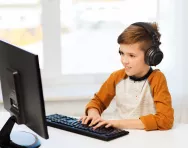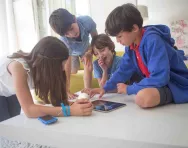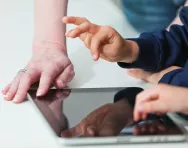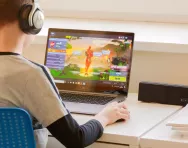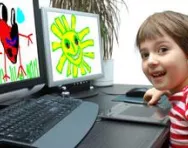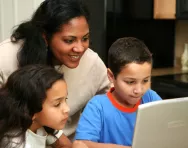TheSchoolRun.com closure date
As we informed you a few months ago, TheSchoolRun has had to make the difficult decision to close due to financial pressures and the company has now ceased trading. We had hoped to keep our content available through a partnership with another educational provider, but this provider has since withdrawn from the agreement.
As a result, we now have to permanently close TheSchoolRun.com. However, to give subscribers time to download any content they’d like to keep, we will keep the website open until 31st July 2025. After this date, the site will be taken down and there will be no further access to any resources. We strongly encourage you to download and save any resources you think you may want to use in the future.
In particular, we suggest downloading:
- Learning packs
- All the worksheets from the 11+ programme, if you are following this with your child
- Complete Learning Journey programmes (the packs below include all 40 worksheets for each programme)
You should already have received 16 primary school eBooks (worth £108.84) to download and keep. If you haven’t received these, please contact us at [email protected] before 31st July 2025, and we will send them to you.
We are very sorry that there is no way to continue offering access to resources and sincerely apologise for the inconvenience caused.
9 screen time activities you don’t need to feel guilty about
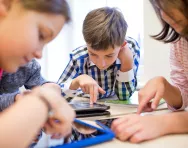
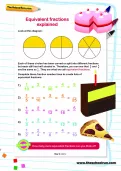

Start a unique learning programme!
- Weekly programme for each school year
- Worksheets sent direct to your inbox
- Keeps your child's learning on track
With new research showing that 75 per cent of children have a tablet of their own by the time they’re 10, the issue of screen time isn’t going to go away. ‘It’s important that children have a balance, but screen time in itself isn’t all bad,’ says Lorraine Allman, author of The Can-Do Child: Enriching the Everyday the Easy Way. ‘The question is how we can encourage our kids to use screens in a way that’s interesting and meaningful.’
We’ve rounded up nine of the best screen time activities that don’t simply involve your child staring blankly at their tablet, but pack an educational punch.
1. Be a mini film critic
If your child seems to do nothing but binge-watch TV programmes and films on their tablet, get them to put their critical thinking skills into action by reviewing what they’ve been watching.
‘Try to watch programmes or films together when you can; a family movie night always works well,’ says Lorraine. ‘Afterwards, talk about it with your child. Which character did you like best? Were you surprised by the ending? It’s not about asking 20 questions, but encouraging them to develop their critical thinking skills.’
As well as reviewing films or TV programmes orally, you could encourage your child to write written reports, like a movie critic. You could even set up a blog where they could publish their reviews.
Try this: Children can earn a purple Blue Peter badge by reviewing an episode of the show.
2. Go on a digital treasure hunt
Geocaching is the perfect way to drag your child out of their lair and into great outdoors, without removing them from their devices. It involves using your smartphone to track down geocaches: small, waterproof boxes containing some hidden treasures and a logbook, hidden in outside locations. Once you’ve found a geocache, you note your details in the logbook and can take a piece of ‘treasure’ (usually something like a cheap party bag toy), leaving one of your own in its place.
‘As well as counteracting the sedentary nature of screen time, geocaching involves working as a team and communicating with each other,’ Lorraine explains. ‘It gives your child some exercise and fresh air, is something the whole family can get involved with, and the reward at the end is a great motivator.’
Try this: Visit www.geocaching.com/play to get the free geocaching app.
3. Create your own animation
Technology offers some fantastic opportunities to be creative, and making animations using figures such as LEGO people will help your child develop skills that transfer well to the classroom, such as planning storylines and thinking about dialogue.
It’s easy to make stop-motion animations by taking a series of digital photos of their figures in slightly different positions and then playing them all back together so it looks like they’re moving. ‘Kids can use storylines from their own lives or use their imagination; either way, they’re developing creative skills that are really important to nurture,’ Lorraine explains.
Try this: Animation Lab for Kids by Laura Bellmont and Emily Blink introduces a range of animation techniques, including cartooning, clay modelling and stop-motion.
4. Become an expert typist
Being able to type fluently is increasingly important for kids. Learning to touch-type will mean they’re able to work quickly and accurately, and without risking repetitive strain injury, at primary-school level and beyond.
There are lots of great games and apps that teach children to touch-type without it feeling like a chore, and it’s a skill that, once developed, will last for life.
Try this: Dance Mat Typing from the BBC is a free games-based touch-typing program for children aged seven to 11.
5. Develop your astronomy skills
Kids of all ages are captivated by the idea of space; it’s a popular primary-school topic, not to mention the subject of many children’s books. And by downloading a stargazing app, you can use your child’s tablet to help them explore our galaxy from the back garden.
‘With these apps, you can hold your iPad up to the sky and find out what constellations you’re looking at,’ Lorraine explains. It’s the modern-day equivalent of a telescope, and will give your child an exciting introduction to astronomy.
Try this: The Star Walk app lets you explore the night sky, with information about over 200,000 stars and other celestial bodies.
6. Make your own family movie
We all know how much kids love a selfie, so why not encourage them to use a smartphone, tablet or action camera to make their own movie, with themselves as the star?
‘Devices like GoPros are brilliant for recording on the go; you can strap them to the front of your bike when you’re going out for a family bike ride, for example, then come back and watch the footage together, and share it with friends and family,’ Lorraine says. ‘It helps your child use screen technology in a way that’s more interactive.’
Try this: VTech’s KidiZoom Action Cam is an affordable piece of equipment that’ll let your child record their own exploits on the go.
7. Learn to write computer games
If your child is mad about Minecraft or hooked on Roblox, what could be cooler than writing their very own computer game?
Coding, or computer programming, is part of the National Curriculum, and there are lots of great apps and programs that will teach them to write code: the first step towards creating their own game.
Try this: ScratchJr is a free app aimed at giving children as young as five a taste of coding.
8. Find an email penpal
Corresponding with other kids in this country or overseas is a great way for your child to develop their written communication skills and find out about other people’s lives, and email and instant messaging means they can keep in touch far more easily than by relying on snail mail.
‘Children can send photos and videos as well as writing messages, but be very clear about who they can and can’t communicate with, and stick to the age restrictions on social media like Facebook,’ Lorraine warns.
Try this: There are organisations that your child can use to find an email penpal, such as Post Pals (a charity that coordinates letter-writing to sick kids), or you can simply put them in contact with one of your own friends’ children.
9. Bring your computer creations to life
Computing doesn’t have to be the antithesis of creativity; there’s an enormous range of art-based games and apps that allow children to tap into their creative side.
‘New technology means children can draw things on screen and then see them brought to life,’ says Lorraine. They can also use sites like YouTube to find brilliant creative projects such as origami projects and step-by-step cartoon tutorials.
Try this: Quiver lets kids print colouring sheets, colour them in and then use the app to animate them, while with Foldify, you can download animal templates to fold into lifelike paper models.
